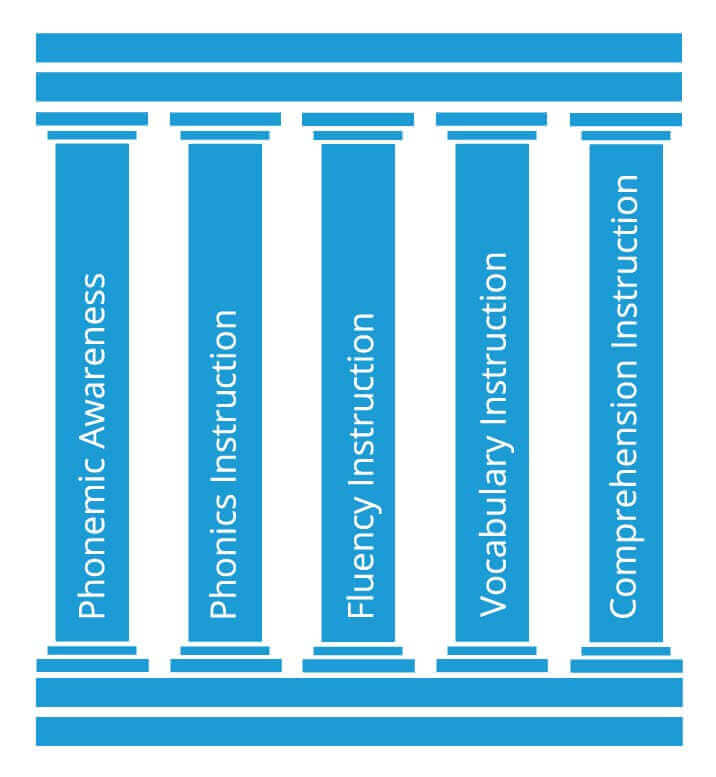Dyslexia Interventions
Dyslexia interventions are the key to ensuring that effective reading approaches are provided to meet the needs of this population.
What the research says about reading instruction

For several decades, studies have been conducted and analyzed to determine the most effective methods of improving reading outcomes. The most exhaustive meta-analysis of this research was conducted by the National Reading Panel (NRP), a group of reading experts established by Congress in 1997 to assess the effectiveness of reading approaches.
The National Reading Panel reviewed over 100,000 studies and published their findings in 2000. The report of the NRP established five essential elements of effective reading instruction, which have come to be known as the “five pillars”. These five components are:
 |
Phonemic awareness - awareness of the individual sounds in speech and how sounds are blended to create words and changed to create new words. |
 |
Phonics Instruction - understanding of the relationship between individual sounds of speech and the representation of these sounds in print as well as the patterns of English that allow decoding (reading) and encoding (writing) of text. |
 |
Fluency - ability to rapidly and automatically decode text in order to read smoothly and with expression. |
 |
Vocabulary - words whose meaning is understood and can be used appropriately when speaking, reading, and writing. |
 |
Comprehension - ability to understand the meaning of text and what the author was attempting to communicate. |
These National Reading Panel recommendations are considered to be the basic components of reading instruction for all children in all classrooms. We now know, however, that reading instruction alone may not be enough for learners with dyslexia. It is important then to determine what additional support, or interventions, are necessary.
Effective Dyslexia Interventions
New research on dyslexia shows that the most effective dyslexia interventions are based on an approach that dates back to the 1920s. This approach, Orton-Gillingham, is named after a neuropsychiatrist and an educator who together created a process for systematic reading intervention. The Orton-Gillingham model incorporates the following components:
-
Personalized to meet the needs of individual students and to move at the student's pace. Intervention is most often done one-on-one or in small groups, but can be adapted for a classroom.
-
Multisensory and interactive to engage various parts of the brain. The approach encourages visual, auditory, and kinesthetic learning.
-
Explicit direct instruction of phonics to create solid connections for sound/symbol relationships and the alphabetic principle.
-
Sequential and structured instruction that begins with simple concepts and moves to more complex. The order in which students are introduced to the patterns of English are based on logical steps that build on one another.
-
Continuous feedback and positive reinforcement that supports mastery of skills before moving on.